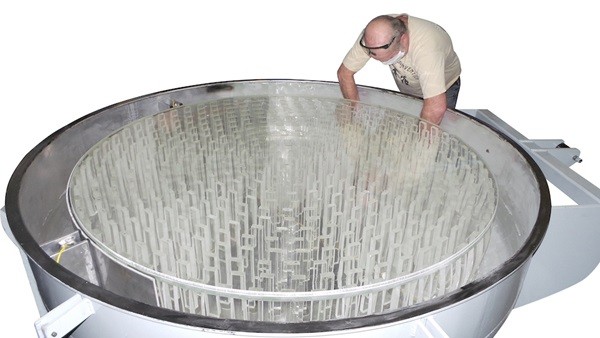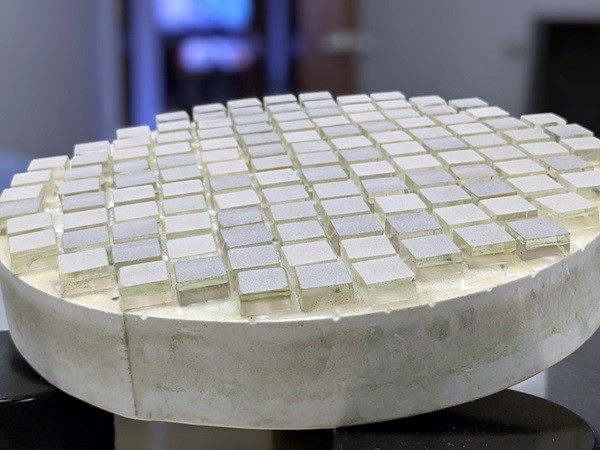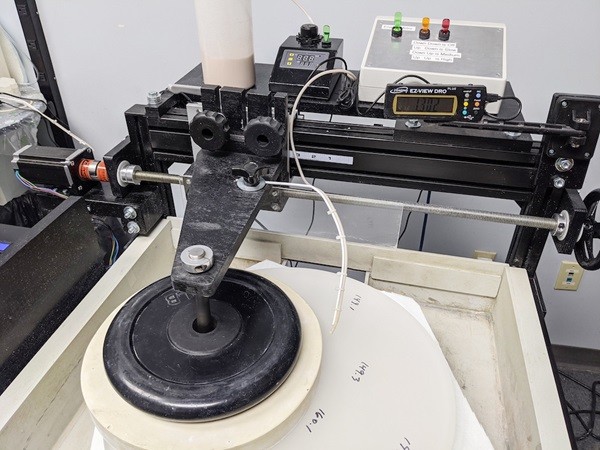Explore how telescope mirrors are made

If you have ever attended a club star party or an amateur astronomy convention, you have undoubtedly strolled through an observing field. Scattered throughout are silhouettes of telescopes and attendees, all talking shop. Some telescopes are surrounded by small groups, while others are mobbed with people standing in line, waiting for a chance to glimpse the current target.
Often, large-aperture Newtonian reflectors are the most crowded, as their eyepieces reveal details that go unseen in lesser instruments. Whether it’s spotting the intricate labyrinths of a bright nebula, the glittering spectacle of a star cluster, or the dim glimmer of a galaxy just this side of infinity, those magnificent telescopes garner more “oohs” and “ahs” per inch of aperture than just about any other.
At the hearts of these outstanding, handcrafted instruments are their optics. The mirrors inside these telescopes are painstakingly and individually crafted by optical artisans. They combine state-of-the-art fabrication techniques with individualized testing to ensure each and every mirror is near perfect.
To find out how they do it, I recently interviewed the owners of several manufacturers of premium optics, including Lightholder Optics, Optiques Fullum, Ostahowski Optics, Waite Research, and Zambuto Optical. Each owner walked me through their thoughts on topics ranging from how they began their careers to the specific techniques they follow to create their masterpieces.

At the request of a private owner, Optiques Fullum created this 61.25-inch f/3.5 Techno Fusion mirror.
Simple beginnings
These magical mirrors are created in small optical shops by people who typically got into the business by chance.
Some had mentors early on who were instrumental to helping them hone their skills. Carl Zambuto of Zambuto Optical credits a local amateur telescope maker, Earl Watts, with convincing him to make his first mirror, a 6-inch. “I had zero interest, but he persisted. So, I [made] the first one and it hit me like a disease,” he says. “The following weekend, I was [creating] another one outside on a snowy day at my parents’ home in the mountains.”
Normand Fullum of Optiques Fullum, however, made his first mirror out of necessity. “I could not afford my first telescope, so I decided to make it myself,” he says. Still, the outcome was the same as Zambuto’s: “The results were so gratifying that I decided to make a second one and then another one.”
As these amateur telescope makers shared the views through their telescopes with friends and fellow amateurs, fellow hobbyists asked for mirrors of their own. Things started slowly. But as their reputations grew, so did their businesses.

Grinding tools can be made of a variety of materials, but most common is glass, plaster, or ceramic.
Making a telescope mirror
To start, a new mirror blank is “sanded” down to create a precise parabolic curve in a process called grinding. To do that, the blank is paired with a device called a grinding tool, usually made of glass, plaster, or ceramic. Unlike typical sandpaper strips, the so-called sandpaper used in grinding is actually a mixture of grit and water. A layer of grit is sprinkled on the blank. Then water is sprayed onto the grit and the machine is turned on to spin the grinding tool. More grit and water is added as needed. The coarser the grit, the quicker the grinding — but also the rougher the surface. That’s why it’s important to frequently measure the depth of the curve throughout the entire process.
After grinding comes polishing. At this point, each mirror is tested to check the initial concave curve. A spherical concave curve is usually acceptable for high-focal-ratio mirrors (usually f/10 and above). But the steep angles in lower-focal-ratio mirrors, especially in today’s fast sub-f/4 Newtonian systems, require ultrasmooth, precisely crafted parabolic curves to correctly focus incoming light. Therefore, the mirror’s surface must first undergo a process called figuring.
Figuring is done by passing a second tool, referred to as a pitch lap, over the mirror by hand while the mirror rotates on the grinding machine. The grit used for this stage of production, technically called polishing compound, allows for very fine adjustments to the curve. This is where the artistry really comes in. Painstaking testing and inspection, followed by slowly correcting hills, valleys, and other irregular zones in the parabolic curve — first with machines and then by hand — are all critical for exceptional results.
To test for any optical imperfections at the final stage, the mirror undergoes several optical assessments using interferometers in controlled environmental conditions. Interferometry testing compares a reference mirror with a known accuracy to the newly manufactured mirror. A laser beam is shot between the two mirrors, creating a series of lines, called fringes, on the surface of the mirror. A computer then reads those lines and averages the results from a series of tests to determine the mirror’s accuracy. For manufacturers like Terry Ostahowski of Ostahowski Optics, this computer-generated report is customarily given to the purchaser to objectively prove the mirror’s quality.
Once a mirror is fabricated, all that is left is for it to be coated. Some premium mirror makers send their products to reputable coating companies, while others do that step in-house. Regardless, most premium mirrors feature enhanced aluminum coating to reflect 96 percent of the light striking its surface. By comparison, standard aluminizing reflects around 90 percent. The reflective coat is deposited in a vacuum chamber, where the aluminum is evaporated to create a vapor, which evenly coats the mirror. To create an enhanced coating, several layers of dielectric film are added on top of the aluminum. Finally, to prevent scratching, an overcoating of silicon dioxide (SiO2), which is both hard and transparent, is deposited to protect the delicate surface.

A mirror blank is ready for grinding in this image. A layer of grit and water will be added to the top of the blank before the machine is turned on.
The artistry
While the general process of creating a mirror is the same, each manufacturer has their own quirks and tricks when it comes to producing the finest mirrors.
“Mirror blanks usually start as either molded blanks or glass that is waterjet-cut from flat sheet glass,” explains Gordon Waite of Waite Research. “We have developed a computerized, high-speed rough polishing machine programmed with a series of strokes to move the mirror smoothly toward the desired surface shape.” This fine-tuning continues up until the final moments of finishing a mirror. For Zambuto, the process is all about control: “This is a two-person shop. We use simple tools and machines that we built.” In this way they can control every aspect of mirror manufacturing, from casting the mirror blank to toughening the glass through heating and slow cooling to grinding, polishing, figuring, testing, and coating. Zambuto’s machines also offer an added bonus: “Each machine has only one job in the process, allowing us to build the mirrors at lower cost,” he says.
Alternatively, you can start the process with a pre-generated blank, saving time and increasing the operations’ efficiency. That’s the route John Lightholder of Lightholder Optics takes. He then cuts and polishes the mirror’s edges in a process called beveling, which ensures the edges of the mirror won’t improperly scatter light. “Next,” he says, “is grinding with 40-micron aluminum oxide grit” until the mirror is near the desired focal length. Then, he follows up with fine grinding, using “30-, 20-, 9- and 3-micron powders, constantly checking along the way to maintain the desired focal length.”
Of those I spoke with, Optiques Fullum has produced the largest mirror: a monstrous 61.25-inch f/3.5 optic. For mirrors larger than 24 inches, Fullum makes his own “Techno-Fusion” blanks that use a unique fusing process, allowing him to build very large, rigid mirrors that are surprisingly lightweight for their size. Rather than solid glass, Techno-Fusion mirrors feature an open central structure consisting of two thin glass disks sandwiching vertical columns of borosilicate glass that support the mirror surface. Not only does this design cut weight, it also shortens the nightly cool-down process needed for image stability.
No matter the technique, the end result is a mirror that, when placed in a finely crafted telescope, is sure to earn “oohs” and “ahs” from anyone who peers through the eyepiece — especially the proud owner.
Source: Astronomy Magazine